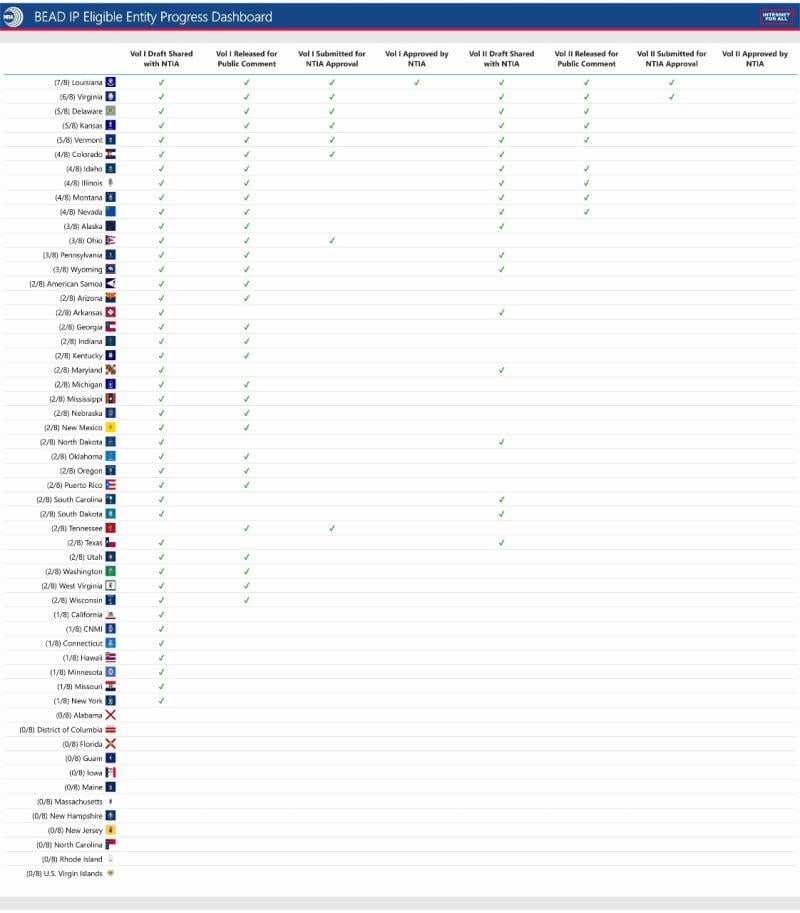The National Telecommunications and Information Administration (NTIA) has announced the launch of a public dashboard showing the progress of states and territories as they plan to implement the $42.45 billion Broadband Equity Access and Deployment (BEAD) program.
The BEAD Initial Proposal Progress Dashboard will display the status of each state or territory’s Initial Proposals for the program. Initial Proposals outline how each entity will spend their share of the pot. Once NTIA approves a proposal, a state can request access to at least 20% of their allocated funds.
The BEAD initial proposal consists of two separate volumes: Volume 1 should outline a state or territory’s challenge process, during which a unit of local government, nonprofit organization or broadband service provider can challenge whether a location should be eligible for BEAD grant funding. Volume 2 covers the remainder of the implementation plan as detailed in the BEAD Notice of Funding Opportunity.
The dashboard contains key milestones that states and territories should reach to meet the NTIA’s December 27 deadline for initial proposals.
Those include sharing a pre-submission draft of Volume 1 with NTIA for guidance and feedback, releasing Volume 1 for public comment and submitting Volume 1 for NTIA approval. The remaining milestones on the dashboard are the same actions for Volume 2.
The dashboard also notes whether NTIA has approved each volume, although initial proposals do not need approval before the December deadline. The NTIA has still “urged states and territories to submit their Volume 1 for approval as soon as they can,” a spokesperson told Fierce Telecom, as upon Volume 1 approval and submission of Volume 2, a state or territory can commence their challenge process.
So far, the dashboard shows Louisiana, Virginia, Delaware, Kansas and Vermont farthest along in the process, with Louisiana now able to commence their challenge process. Forty-four states and territories have shared Volume 1 with NTIA for guidance and feedback, and 19 states and territories have also shared Volume 2 with NTIA for guidance and feedback.
Nine states and territories have also released Volume 2 for public comment, and 31 states and territories are in the public comment stage for Volume 1.

